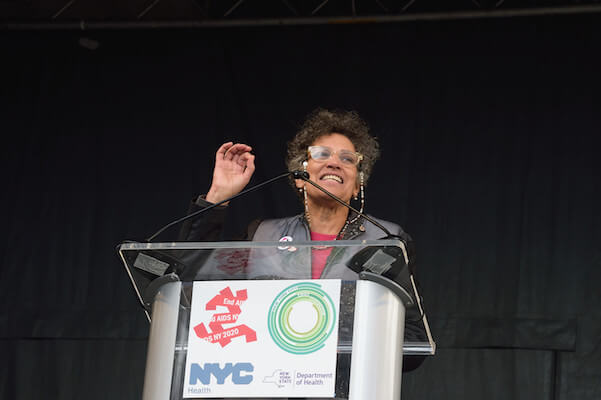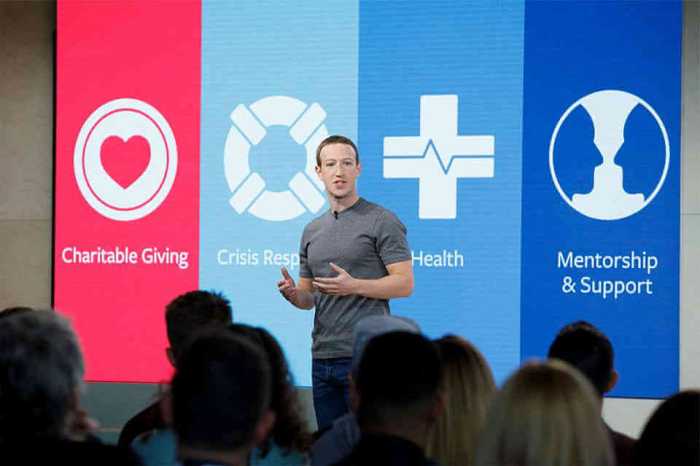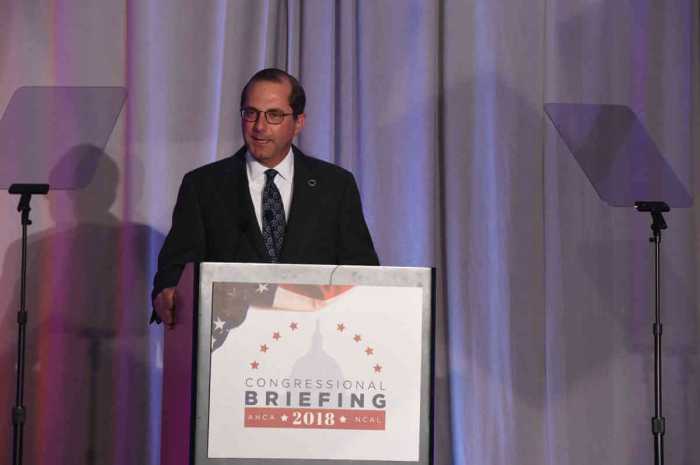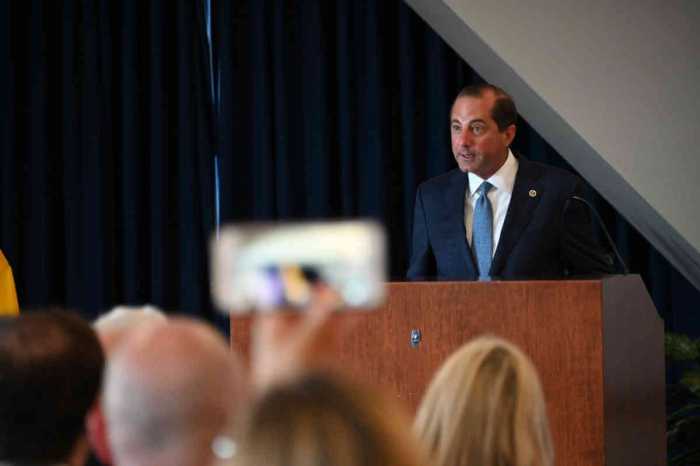Dr. Mary Bassett, the city health commissioner, at the December 1 dedication of the NYC AIDS Memorial. | DONNA ACETO
The city health department reported that new HIV diagnoses among gay and bisexual men fell 10.5 percent in 2015 over 2014, and new HIV diagnoses among women declined by eight percent in 2015 over 2014. For the first time in the history of the AIDS epidemic, the total number of new HIV diagnoses in New York City fell below 2,500 in 2015.
“We have yet again reached another historic low in new HIV diagnoses,” Dr. Mary T. Bassett, the city’s health commissioner, said in a November 29 statement. “We still have more work to do to reach our goal of ending the epidemic and reduce the disparities that persist.”
In 2014, there were 2,754 new HIV diagnoses in the city. An estimated 1,775 of those people were newly infected in 2014. The others were likely infected prior to 2014. In 2015, there were 2,493 new HIV diagnoses and an estimated 1,696 of those people were infected that year.
Gay, bi men, especially black, Latino, predominate; more progress needed to meet 2020 goal
In 2015, 2,010 of the new diagnoses were among cisgender men, 441 were among cisgender women, and 42 were among transgender men and women. At 1,450 new HIV diagnoses, men who have sex with men accounted for 58 percent of all the new HIV diagnoses in the city, and black and Latino men accounted for most of the new HIV diagnoses among gay and bisexual men.
This pattern of more new HIV diagnoses occurring among men who have sex with men, with a greater impact among black and Latino men, has held for years.
Among estimated new HIV infections from 2011 through 2015, men who have sex with men have accounted for 72 percent to 78 percent of the incidents. In 2015, 1,288, or 76 percent, of the estimated new HIV infections were among gay and bisexual men. The new 2015 infections were divided between men over 30 at 692 cases and men under 30 at 597 cases.
The city has endorsed the Plan to End AIDS, which aims to reduce new HIV infections in New York to 750 annually in 2020 from the estimated 2,481 new HIV infections statewide in 2014. The statewide estimate was produced by the state health department. Over 90 percent of new HIV infections in the state are in New York City. For its part, the city hopes to hit 600 new HIV infections in 2020.
The plan uses pre-exposure prophylaxis (PrEP) and post-exposure prophylaxis (PEP), both treatments using anti-HIV drugs in HIV-negative people to keep them uninfected. Both drug regimens are highly effective when used correctly. The plan also treats HIV-positive with anti-HIV drugs, which keeps them healthy and uninfectious.
Other plan components include increasing access to stable housing, nutrition, and other services for HIV-positive people because those services make it easier for them to stay on their anti-HIV drugs. Many of these services were previously available only to people with AIDS.
In some respects, the plan is a classic public health strategy that builds on existing declines in an infectious disease with new interventions that drive the falling numbers down farther and faster. It is also an ambitious plan.
From 2011 through 2015, the city saw a 30 percent decline in estimated new HIV infections from 2,424 to 1,696. This happened without PrEP, very little PEP use, no major focus on treatment as prevention among HIV-positive people, and fewer services for HIV-positive people. The city is betting that the widespread use of these drug and service interventions will cut new estimated HIV infections by 65 percent – 1,696 to 600 – from 2016 through 2020.
The city health department did not respond to an email seeking comment and asking questions about the rate at which new HIV infections are declining.




































